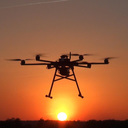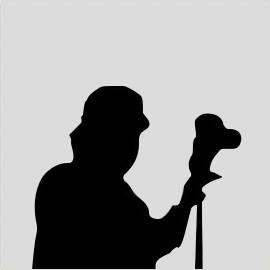1 Like
Hvalba spreads around the bottom of a deep inlet, Hvalbiarfjørður, northeast on Suðuroy. Two tunnels connect Hvalba to its neighbour-villages. The southbound tunnel (1400 meters) leads to Trongisvágur/Tvøroyri and the northbound one (1500 meters) leads to Sandvík. In the mountains around the southbound tunnel brown coal has been extracted from deep and unpleasantly low mines since the 1770-ties. The brown coal was an important source of energy on the Faroe Islands until the end of World War 2. A few miners are still extracting coal from the mines. Hvalba is located on the east side of the island but the inlet is so deep that the distance to the west coast is short. On the west coast there is a place of call that makes it possible to go fishing in small boats from both sides of the island. Hvalba is a beautiful village and the nature on the west coast is definitely worth visiting. Pirates ravaged Hvalba, as other villages on Suðuroy, in the 17th century. In 1629 three North-African pirate ships attacked the village. When they left the village after the ravage two of the ships ran aground on some rocks and were shattered by the surf. Tradition says that more than 300 bodies washed ashore. Down by the shore there is a place called ‘Turkargravir’. Here all the bodies were buried. 30 women and children were taken away to be sold as slaves in North Africa. On the Faroe Islands a collection was organized to raise enough money to by back the people. They did not succeed though and the people never returned to the islands.





Location and size Situated in the heart of the Gulf Stream in the North Atlantic at 62°00’N, the Faroe Islands lie northwest of Scotland and halfway between Iceland and Norway. The archipelago is composed of 18 islands covering 1399 km2 (545.3 sq.miles) and is 113 km (70 miles) long and 75 km (47 miles) wide, roughly in the shape of an arrowhead. There are 1100 km (687 miles) of coastline and at no time is one more than 5 km (3 miles) away from the ocean. The highest mountain is 882 m (2883 ft) above sea level and the average height above sea level for the country is 300 m (982 ft). Climate The weather is maritime and quite changeable, from moments of brilliant sunshine to misty hill fog, to showers. The Gulf Stream encircling the islands tempers the climate. The harbours never freeze and the temperature in winter time is very moderate considering the high latitude. Snowfall occurs, but is shortlived. The average temperature ranges from 3°C in winter to 11°C in the summer. In sheltered areas, the temperature can be much higher, but the air is always fresh and clean no matter what the season. Population The population is 48.520 (1st April 2008). About 19,400 people live in the metropolitan area which comprises Tórshavn, Kirkjubøur, Velbastaður, Nólsoy, Hestur, Koltur, Hoyvík, Argir, Kaldbak, Kaldbaksbotnur, Norðradalur, Syðradalur, Hvítanes, Sund, Kollafjørður, Signabøur and Oyrareingir, while about 4,700 people live in Klaksvík, the second largest town in the Faroe Islands. Form of Government Since 1948, the Faroe Islands have been a self governing region of the Kingdom of Denmark. It has its own parliament and its own flag. It is not, however, a member of the European Union and all trade is governed by special treaties. Languages Spoken Faroese is the national language and is rooted in Old Norse. Nordic languages are readily understood by most Faroese, and English is also widely spoken, especially among the younger people. Religion Religion plays an important part in Faroese culture and over 80% of the population belong to the established church, the EvangelicalLutheran. 10% of the population belong to the Christian Brethren (Plymouth Brethren). Industry The fishing industry is the most important source of income for the Faroes. Fish products account for over 97% of the export volume. Tourism is the second largest industry, followed by woollen and other manufactured products.